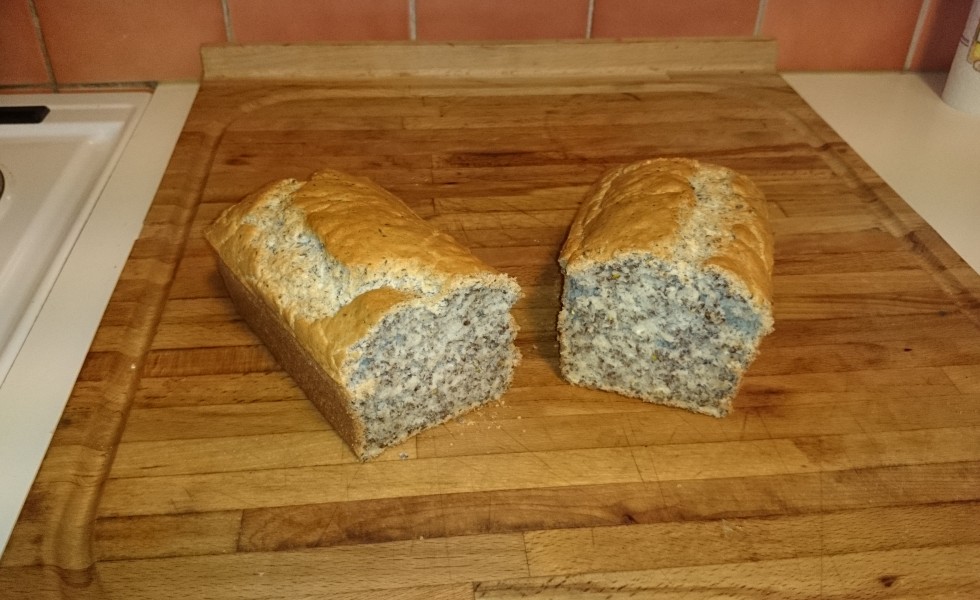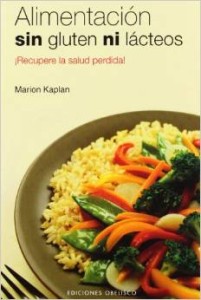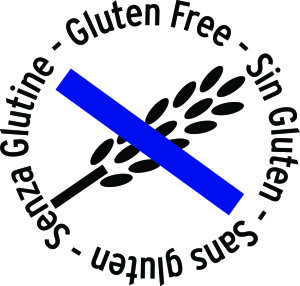
Fiber-rich GF bread recipe
My grandmother always laughed at me, that I would never follow a recipe exactly as I found it. Quite right, I read this recipe for “paleo bread” and made some changes. The result is really tasty and filling, soft and fluffy, fiber-rich, protein-rich, gluten-free, and grain-free.
1 ½ cup Arrowroot Powder
1 cup ground flaxseed
4 Eggs
4 Egg Whites
4 Tbsp Olive Oil
1 tsp Salt
4 tsp Baking Powder (double-check it doesn’t have wheat!)
1 tsp honey or molasses (optional)
1 Tbsp Psyllium Husk powder
Coconut Oil (or other oil will do) for the tins/pan
Preheat the oven to 350 degrees F (175º C).
Combine all dry ingredients. Then mix the wet (only the egg yolks) and add to the dry until thoroughly incorporated. Whip the 8 eggwhites until hard, and fold them into the batch carefully. Rub your bread loaf pan down with the oil.
Bake 30-35 minutes, or until a toothpick comes out clean.
I found the arrowroot at the Asian supermarket. Olive oil can be replaced by walnut oil. That the whites were whipped is my take. Psyllium Husk is available (at least in Sweden) for gluten free bakery, it gave it a gluten-like aspect, fluffy and not crumbly! I got this recipe online but have adapted it and it’s much better like this. Enjoy!
Grateful for being a woman

(Picture: me, age 17, trying on a dress made of wild silk at our friend Janin’s shop in Palma)
I recently had the chance to attend some workshops about womanhood.
Unfair as it may seem, in the female workshops they are focusing on stressing how wonderful we women are, how each of us is a divine goddess with infinite potential, how we are kind and loving and we should honor and respect our female essence. In male workshops on the other hand, men tend to receive a harsher treatment, getting reminders about how they should behave and what they should be doing. Perhaps a reason for this is that women can be fairly perfectionist and feel depressed about not accomplishing enough, and also feel they are not getting enough love and recognition. It was wonderful to share some loving touch, hugs, and friendship with other women.
Why are men and women so different? And why is it so good? Nature intended us to be different – it is the most basic physiological differences that enable us to procreate. But other differences in skills and character actually make us complement each other. Life gets richer if there is polarity! And this polarity is also key to make a relationship actually work, with the nearly magnetic magic that happens in attraction between a man and a woman.
It is really very sad that modern-day society is counterworking polarity so strongly. Women are encouraged to behave in a more masculine way, dress more like men, show less of their feelings. When we lose track of all we have to share as women, the potential of enlightening the world with our presence simply diminishes. We need to learn to respect our essence!
Yes, I am a woman. I have infinite potential, like my fellow sisters. I am sensitive and sometimes emotional. I am immensely strong as a person, but not always when it comes to muscle strength. And I love it when a man can give me a hand to lift a heavy burden, or to have a small “gentleman-like” gesture, or to offer valuable feedback and insights from “the other side.” I appreciate men and value their worth. I am grateful to be a woman and honored to be able to interact with other women (goddesses in the making) as well as interacting with men (gods in the making) and being enriched by their input and their differences.
Never feel bad to be who and what you are! You are unique.
Two published articles on language
Back in my college years, when I was studying Linguistics, I wrote an article about being multilingual and keeping those other languages alive. The online version that appeared some years later was edited, but the key ideas are still there. Read it here: “Keeping Your Second Languages Alive.”
For their January newsletter, a large translation company asked me to write an article on balance in life, geared to translators. You can read it here: “Effective Juggling for Translators“.
(PS: You will see that the published author’s name was Leticia, my official name – although I prefer Tisha, which is what I am using here in the blog).
“The Swedish Kitchen”
Sometimes my work as a freelance translator coincides with my passion for food, cooking, and culture. During the fall of 2014, I had the assignment to translate “The Swedish Kitchen”, a sweet little book about Swedish culture with some nice gourmet recipes, from English/Swedish into Spanish. The assignment came from the Swedish Institute, is a public agency that promotes interest in Sweden.
This week I had the finished book in my hands. How charming! You can find it at Swedish embassies and consultates abroad, in several languages (note: I only translated the Spanish version).
Gluten basics
In May 2012 I was chatting on Facebook with a guy from Italy who had CF and he was telling me how well his health had turned out when doing a hypotoxic diet, and he prompted me to purchase the book by Marion Kaplan about a diet without gluten or dairy products (original French title: “Alimentation sans gluten ni laitages”, cannot find an English version), insisting he believed I had a gluten intolerance. That was my first contact with the fascinating and astonishing world of gluten and its terrible effects on health.
Fortunately I found the Spanish version of the book that same day in a local bookstore and found in the first chapter a small test to self-evaluate regarding gluten. It stated if you answered “yes” to more than 12 of the symptoms, it was highly likely you had a gluten intolerance and should get tested. I replied positively to 18 of them!
Unfortunately, as I later found out, hospital tests (blood analysis, gut biopsy) only detect celiac disease, which is when the gut villi are completely gone. It is estimated that 1% of the population are celiac, although many are not diagnosed. What is not generally known is that around 40-60% of the population has a gluten intolerance that is beneath the level of celiac disease, in which the gut villi has only a partial atrophy.
Symptoms might be less severe, but since they are not necessarily related to digestion, neither patients nor doctors suspect of gluten.
And the problem is that currently in Europe we do not have hospital tests to detect this degree of intolerance. As far as I know, only Cyrex Labs have developed blood tests to measure it, but they are only available in the United States and Ireland.
What symptoms are we talking about? The most obvious ones are belly bloating and transit issues (constipation/diarrhea). But other symptoms cover tiredness and sleep problems, joint and bone pains, and systemic inflammation (which aggravates other problems such as asthma, breathing problems, fibromialgya, etc.). Regarding emotions, we find depression, behavioral problems (including ADD, ADHD, autism and bipolarity), and diverse hormonal issues (including thyroid and menstruation-related), even being excessively emotional. Then we also find skin problems, anemia (iron deficiency), osteoporosis, feeling cold, liver problems, autoimmune diseases…
A study was performed on children with epilepsy who did not respond to medication. When removing gluten from their diet, 50% of the children became asymptomatic.
Unfortunately this information is only getting known now, even though it’s been around for years. Doctor Tom O’Bryan is one of those who are more devoted to spreading the knowledge about the dangers of gluten. There are tons of clinical studies, but general practitioners don’t have it incorporated into their practices yet.
Why does gluten cause such diverse symptoms? Simple because when tearing the intestinal wall, it allows the gut toxins to get out to the blood stream and attack that part of our body which is more sensitive/delicate/prone to disease.
And why are there so many people with gluten problems now? One cause might be the gene modifications done to the wheat plant since the 1960s, due to which it has much more gluten than before (makes bread be more fluffy and desirable), and thus becomes more irritating for the guts. Besides, other factors that surround us (such as stress, chemical products in food, poor nutrition at large) makes us more likely to end up getting affected by the accumulated effect of daily exposure to gluten.
To conclude my story: I decided to make the test of spending two weeks without eating gluten. Then I ate one tablespoon of soy sauce (which had wheat in it) in a sushi lunch, and ten minutes later my belly had swollen 9 cm and I felt sickly all afternoon. Proof enough for me. Since then I have avoided wheat and foods containing gluten, and my digestion improved and my troubles got minimized. Later I discovered I also have a certain intolerance to other cereals, and I have been studying more and discovering there is gluten or wheat extract in the most unsuspected places. It is a whole patch of listening to your body and discovering a new world, unknown and unsuspected before that. I have learned and put into practice ways to heal the gut.
I wish I had had a coach to help me; I would have dealt with the issues much sooner. That is why it now feels important to me to be able to help others along this way. Having studied nutrition already, I went on to study coaching and doing courses to specialize in gluten and other intolerances. I feel confident that I can now offer help to many people, so they can have more health.
 Shamay Holistic Solutions
Shamay Holistic Solutions


